Samaaro + Your CRM: Zero Integration Fee for Annual Sign-Ups Until 30 June, 2025
- 00Days
- 00Hrs
- 00Min
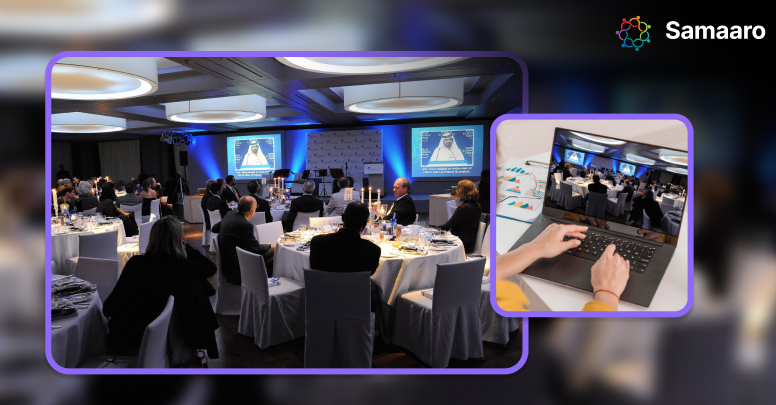
In today’s rapidly evolving world, the traditional concept of exhibitions has been redefined through the power of technology. Virtual exhibitions have evolved as a novel and game-changing alternative for event organisers and company owners looking to reach a worldwide audience while overcoming the restrictions of real events.
In this in-depth study, we will delve into the concept of virtual exhibitions and explore the plethora of capabilities they offer to revolutionise the way events are organised and experienced.
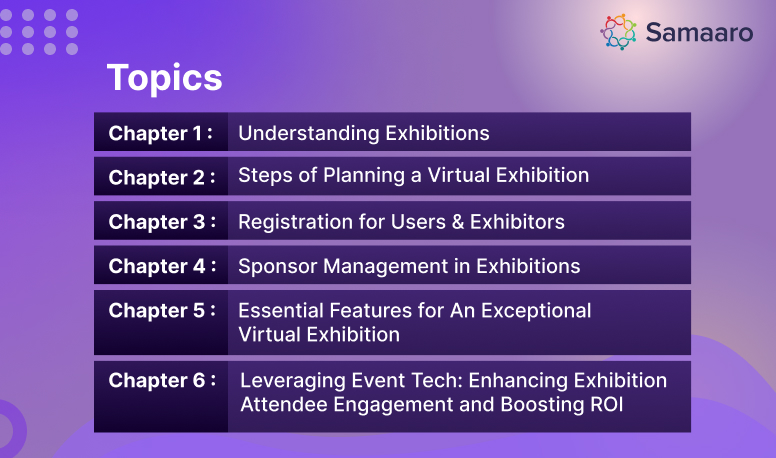
A virtual exhibition is an entirely digital event that simulates the experience of a real exhibition via an online platform. It allows exhibitors to present their products or services, interact with visitors, and network with potential collaborators or clients from all over the world, breaking the barriers of time and space.
Virtual shows provide several advantages over traditional exhibitions. They are more affordable and give a more convenient platform for both customers and brands. Virtual exhibits have arisen as an extremely dependable method of networking, building community ties, and successfully exhibiting a company’s narrative.
Virtual exhibits have significant benefits over traditional physical exhibitions, making them a valuable tool for displaying content and engaging people.
Global Accessibility: One of the most major advantages of virtual exhibits is that they can be accessed from anywhere in the globe by anybody with an internet connection. This worldwide accessibility broadens the exhibition’s reach to a considerably bigger audience than a physical event would, allowing individuals from other nations and regions to participate without having to travel.
Enhanced Interactivity: Interactive components like as 3D models, multimedia presentations, audio tours, and clickable material can be included in virtual exhibitions to improve the visitor experience and make it more engaging and instructive.
Timeless Access: Due to space limits and scheduling, physical displays have a limited lifespan. Virtual exhibits may be kept online for a long time, allowing viewers to access and review the content whenever they plan.
Analytics and Insights: Digital platforms offer useful insights into visitor behaviour and preferences. Organisers can collect statistics on the number of visitors, popular displays, time spent on each item, and other factors to help with future planning and increasing the exhibition’s effect.
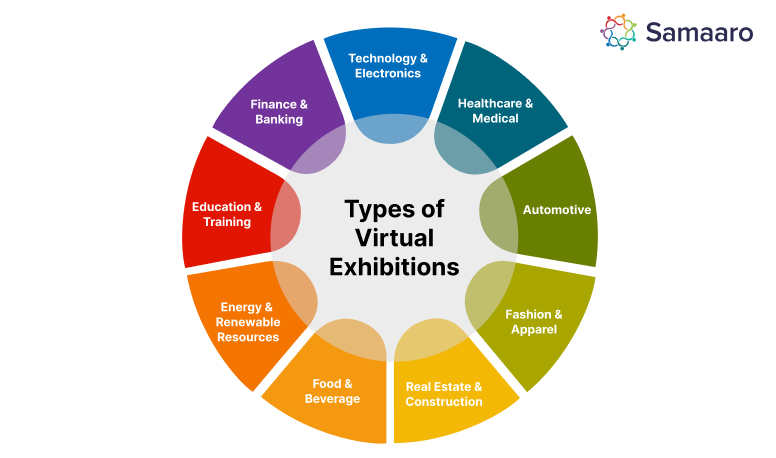
Virtual exhibitions have emerged as powerful alternatives to physical gatherings, offering diverse benefits like global accessibility, cost-effectiveness, and flexibility. Each type of virtual exhibition caters to specific interests and industries, fostering networking, knowledge exchange, and community engagement in the digital age.
Technology and Electronics: Virtual exhibitions in this field showcase the latest innovations in gadgets, software, and consumer electronics, allowing participants to interact with cutting-edge technologies from the comfort of their own homes and explore virtual showrooms for a hands-on experience.
Healthcare and Medical: Virtual exhibitions in healthcare and medical domains serve as platforms to present advancements in medical equipment, pharmaceuticals, and telemedicine solutions. Participants can engage in live webinars, virtual demos, and networking opportunities to stay informed about the latest developments in the industry.
Automotive: Virtual automotive exhibitions offer car enthusiasts and industry professionals a digital space to explore the latest car models, concept designs, and automotive technologies. Attendees can view 3D models, participate in virtual test drives, and attend product launches, all without leaving their homes.
Fashion and Apparel: In virtual fashion exhibitions, designers can showcase their latest collections through high-resolution virtual runways, enabling fashion enthusiasts and buyers worldwide to attend fashion shows, explore new trends, and interact with virtual showrooms to place orders and gain insights into the industry.
Real Estate and Construction: Virtual exhibitions in real estate and construction offer a 3D immersive experience for property developers, buyers, and investors. Attendees can virtually tour properties, explore architectural designs, and attend seminars on the latest trends and technologies shaping the industry.
Food and Beverage: Virtual exhibitions in the food and beverage industry provide a digital platform for food vendors, manufacturers, and restaurateurs to showcase their products, offer virtual tastings, and engage in B2B networking to foster new business partnerships.
Energy and Renewable Resources: Virtual exhibitions in this field present the latest advancements in renewable energy technologies, sustainable practices, and energy-efficient solutions. Participants can attend webinars, explore interactive displays, and connect with industry experts to promote eco-friendly practices.
Education and Training: Virtual exhibitions in education and training focus on e-learning platforms, digital learning tools, and educational resources. Educators, students, and institutions can participate in virtual classrooms, demo educational technologies, and discuss the future of online education.
Finance and Banking: Virtual exhibitions in finance and banking offer a platform for financial institutions, fintech companies, and investors to showcase their services, hold webinars on financial literacy, and engage in discussions about the evolving landscape of the financial sector.
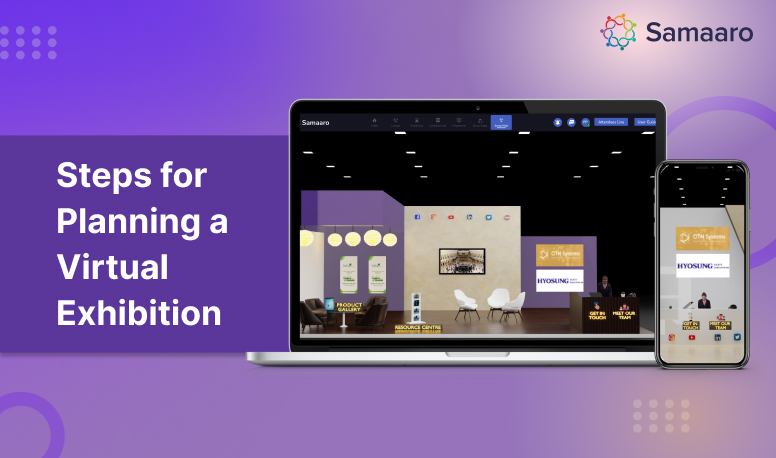
To ensure the success and engagement of a virtual exhibition, numerous things must be carefully considered. Here is a step-by-step approach to organising a virtual exhibition:
Specify Goals: Begin by identifying explicitly stated goals for your virtual exhibition. Understand your objectives for the event. Among the objectives might include raising brand awareness, generating leads, educating participants, or establishing collaborations. Having well-defined objectives will assist guide the planning process and assess the success of the event.
Create an Event Plan Strategy: Create an event plan strategy that covers the full process, from pre-event promotion to post-event follow-up. Include important milestones, deadlines, roles and duties, and marketing techniques to entice attendees. This strategy should also include content development, speaker selection, and sponsorship options. Below are some example questions that should be addressed while organizing an online exhibition:
Selecting the Right Event Tech Platform: Choosing the right virtual event platform is critical for a successful exhibition. Consider elements like as usability, interaction, scalability, and audience reach. Look for solutions that can host webinars, live streaming, virtual booths, and networking places. Test the platform properly to verify that it suits your needs.
Make the Exhibition Interactive with Amazing Features: Engagement is critical for the success of a virtual exhibition. Include interactive elements such as product finder, search & filter options, scavenger hunts to boost interaction. Make it possible for attendees to communicate with exhibitors via chat or video calls. To improve the experience, consider incorporating 3D virtual booths with product demos and swag bags.
Gather Feedback: Attendee satisfaction and areas for development may be greatly improved by gathering feedback. Collect input from participants via surveys or polls both during and after the virtual display. Inquire about their overall experience, favourite aspects, and any future event recommendations. Utilise this input to improve future exhibits.
Track event analytics to acquire insights into attendee behaviour, content performance, and overall event success. Keep track of KPIs like the number of registrants, session attendance rates, engagement levels, and lead conversion rates. This information will be used to assess the event’s impact and give vital insights for future planning.
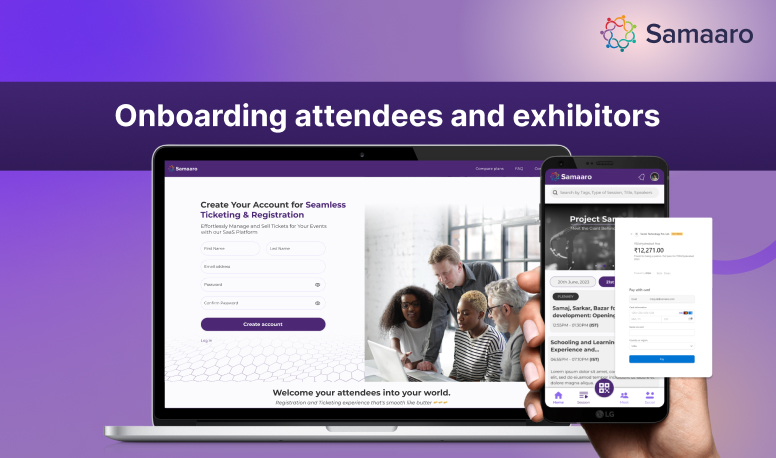
Registration for users and exhibitors is a crucial aspect of virtual exhibitions. For users, the process focuses on creating a seamless and personalized experience, while exhibitors go through a more involved process to showcase their offerings effectively.
With proper registration and preparation, virtual exhibitions can be highly successful in connecting businesses and individuals across the globe.
The first step that potential attendees must do to participate in a virtual exhibition is to register as a user. The registration procedure varies according on the platform hosting the event, but it usually consists of the following steps:
Landing Page: The website for the virtual exhibition will have a landing page with information about the event, its schedule, and major attractions. Users will be able to begin the registration process by clicking a visible “Register” or “Sign Up” button on the website.
Personal Information: Users will be routed to a registration form where they must submit personal information such as their name, email address, and, in certain cases, a phone number. This data is essential for event organisers to engage with participants and offer event-related updates.
Establish a Profile: Some virtual exhibition platforms allow users to establish personalised profiles that include professional information, interests, and social network handles. This facilitates networking and helps exhibitors to better understand their target demographic.
Ticket Selection: Virtual exhibits may ask consumers to pick a ticket type depending on their preferences in some situations. For example, various ticket categories might have differing degrees of access or additional privileges.
Payment: While many virtual exhibits are free to visit, others may charge a registration fee to support event costs. Users will be requested to make a safe payment using the site.
Confirmation and Access Details: After completing the registration procedure, users will get an email with their access details, event links, and any additional instructions they may need to join the virtual exhibition.
Organization Information: During the application process, exhibitors will be asked to provide details about their company or organization, including name, description, logo, and contact information.
Select Exhibition Booth: Virtual exhibitions often offer different booth with varying levels of visibility and features. Exhibitors will choose a package that aligns with their marketing goals and budget.
Booth Customization: Exhibitors can customize their virtual booth using the dashboard. They can upload branding elements such as logos, banners, and booth designs to create a visually appealing and on-brand representation of their company.
Dashboard: The dashboard provides exhibitors with real-time analytics about visitor engagement. They can see the number of visitors, the duration of their visits, popular booth sections, and more. This data helps exhibitors understand their audience and make informed decisions. It allows to capture and manage leads generated during the virtual exhibition. They can view contact information of potential customers and export the data for further follow-up.
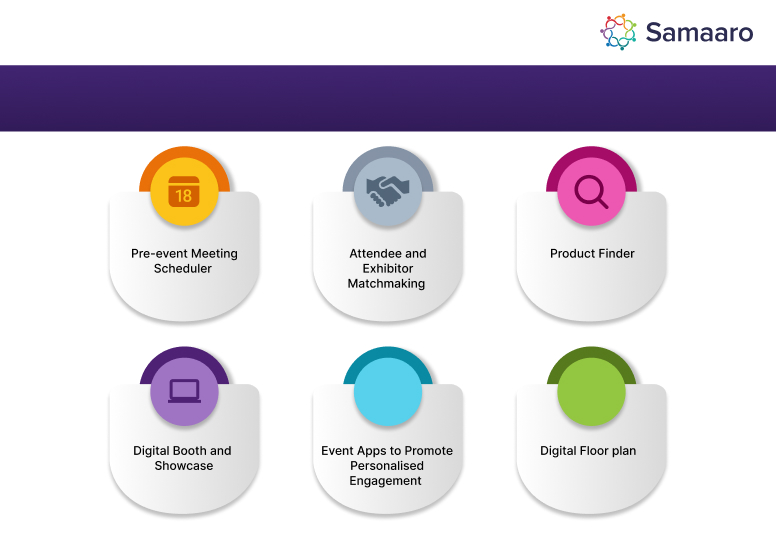
Pre-event Meeting Scheduler
A pre-event meeting scheduler is a tool that allows attendees and exhibitors to schedule meetings before the virtual show begins. It allows participants to organise their calendars ahead of time and maximises networking chances.
Attendees can explore the list of exhibitors and their profiles, see their products/services, and then request appointments with certain exhibitors during specific time windows. Likewise, exhibitors may contact potential leads and set up appointments with interested attendees. This feature simplifies the process of interacting with relevant individuals and guarantees that important interactions do not go unnoticed during the virtual event.
Attendee and Exhibitor Matchmaking
The tool uses AI algorithms to link attendees with exhibitors based on their preferences, interests, and business objectives. Attendees may be expected to fill up a thorough profile showcasing their industry, interests, goods of interest, and so on when they register for the virtual expo.
Exhibitors, meanwhile, submit information about their services, target audience, and business objectives. This data is then analysed by the AI-powered matching engine, which suggests appropriate exhibitors to attendees and vice versa. This guarantees that guests are linked with the most appropriate exhibitors, which improves their entire experience and increases the possibility of fruitful connections.
Product Finder
Matchmaking is just a simplified way of connecting the participants with relevant exhibitors. To further improve the experience for the attendees, consider a platform that offers a tool that enables attendees to quickly search for products & sellers that they wish to explore.
Digital Booth & Showcase
The digital booth and showcase are virtual representations of an exhibitor’s actual display at the event. It is a customised online platform where exhibitors may showcase their products, services, promotional materials, and corporate information. To successfully engage guests, the digital booth frequently contains multimedia features including as movies, photos, brochures, and interactive demos.
Exhibitors may use the digital booth to present their services, communicate with visitors via live chat or video conferencing, and generate leads in a virtual setting. Attendees may tour various digital booths at their leisure, obtain information, and engage in real-time dialogues with exhibitors without having to physically present themselves.
Event Apps to Promote Personalised Engagement
Event applications have evolved into significant tools for interacting with participants in real time. Event applications keep attendees informed and involved during the event by using push alerts, personalised agendas, and interactive elements.
Organisers may send personalised messages to attendees, propose services based on their interests, and encourage networking opportunities, resulting in a more rewarding and personalised experience.
Digital Floor plan
A floor plan is a digital depiction of the virtual exhibition venue that shows how booths, stages, networking spaces, and other event features are laid out. It acts as a navigation tool for spectators to quickly navigate the virtual exhibition.
The floor design includes an interactive map that allows participants to view exhibitor information, join seminars, and engage in other activities by clicking on certain booths or regions. It assists guests in planning their event experience, locating relevant exhibitors, and identifying the schedule of talks or presentations they wish to attend. The floor layout improves the entire event experience by organising and making it more accessible to all participants.
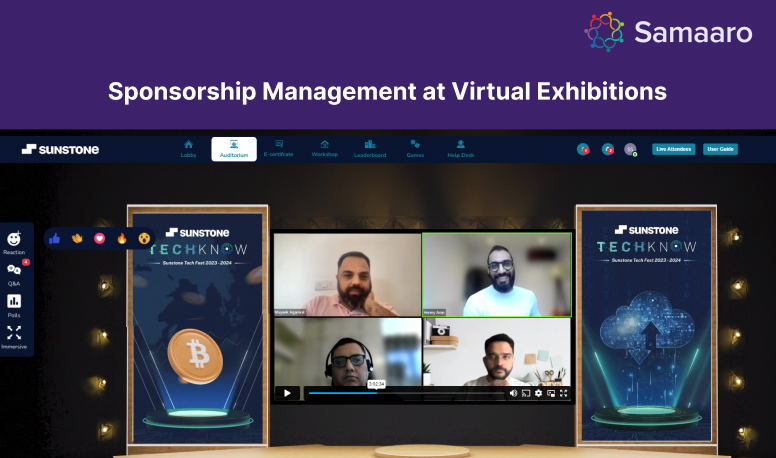
Organisations or people that support an event financially or in-kind in exchange for different perks are known as sponsors. A successful and gratifying collaboration for both the sponsors and the exhibitors depends on proper sponsorship management.
Documentation:
Sponsor management also involves creating and executing comprehensive plans for sponsors’ involvement during the event.
By effectively managing sponsors, exhibitors can build strong relationships, deliver on promises, and create a positive experience that encourages sponsors to participate in future events, leading to a successful and sustainable event ecosystem.
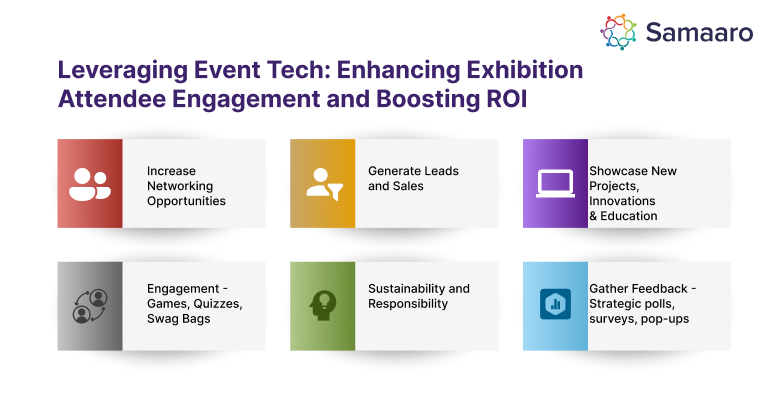
Increase Networking Opportunities (AI matchmaking, one-one/group chat & video calls)
Through AI matchmaking algorithms that join people based on their interests, industries, and preferences, event tech facilitates effortless networking. Participants can have meaningful conversations and create enduring relationships by meeting other like-minded professionals.
Additionally, one-on-one and group chat features offer in-the-moment conversations, enabling participants to share ideas, work together on projects, and talk about new business partnerships. By allowing face-to-face talks even in a virtual context, the integration of video call capabilities further increases the physical touch.
Generate Leads and Sales (virtual booths)
Exhibitors can create interactive and immersive digital booths, complete with product demonstrations, promotional videos, and downloadable resources. Attendees can access these booths at their convenience, facilitating a steady stream of leads throughout the event and beyond.
Organisers can track which sessions were the most popular, which booths had the most footfall, and which components of the event were the most popular with guests. Event organisers can take data-driven decisions to better future events, allocate resources, and ultimately boost ROI by analysing this data.
Showcase New Projects and Innovations & Education (conferencing)
Conferencing tools integrated with event technology platforms provide educational sessions and presentations where business leaders may discuss their latest projects and discoveries. In addition to fostering thought leadership and a culture of continual learning inside the exhibition space, these seminars offer insightful information.
Attendees are more likely to stay interested during the event by providing a wide variety of instructional information, which improves the whole event. Additionally, taped sessions may be made accessible for on-demand access, expanding the reach of the event past its scheduled duration.
Engagement – Games, Quizzes, Swag Bags
Event tech platforms can incorporate gamified elements like interactive games, quizzes, and competitions to keep attendees actively involved. This stimulates healthy competition, encourages guests to explore all exhibition areas, and increases the amount of time attendees spend interacting with exhibitors. Therefore, exhibitors benefit from more visibility, while attendees have a more engaging and collaborative event experience.
Sustainability and Responsibility
Event organizers and attendees are growing more aware of their environmental effect. By lowering the demand for physical resources and lowering the carbon footprint connected with conventional events, event technology may aid in sustainability initiatives. With virtual exhibits, less paper and other resources are used, and the accompanying travel for visitors may be minimised or avoided.
Gather Feedback – Strategic polls, surveys, pop-ups
For organisers and exhibitors, feedback is a significant asset for understanding visitor preferences, assessing event performance, and identifying areas for development. Strategic polls, surveys, and pop-ups strategically positioned around the event may capture real-time input from guests using event tech platforms. The information gathered can provide useful insights on attendee satisfaction, preferences, and pain points. Organisers may constantly improve their event plans and create more engaging and rewarding experiences for future guests by acting on this input.

Samaaro is an all-in-one event technology company that offers a comprehensive suite of event management solutions to help event organisers streamline operations, boost attendee engagement and maximise ROI of their events.
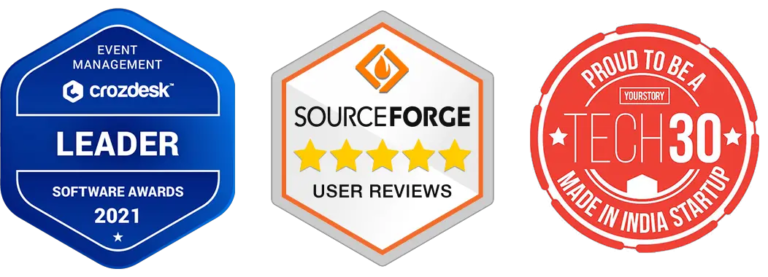

© 2025 — Samaaro. All Rights Reserved.